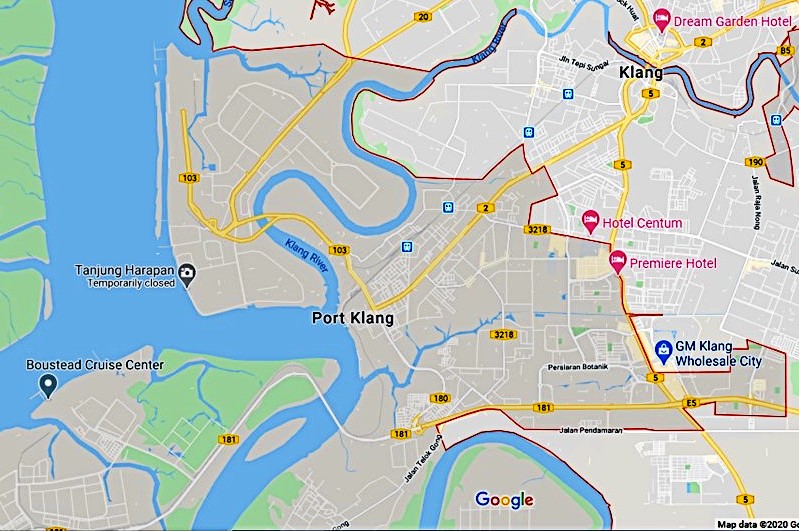The classic Teochew porridge meal originates from the Chaoshan region in Guangdong, China. The name Chaoshan itself comes from a combination of the names of the two main cities there: Chaozhou and Shantou.
Located at the border of Guangdong and Fujian provinces, the Teochew dialect is actually closer to neighbouring Fujian’s Minnan language than its home province, Guangdong’s Cantonese - reminiscent of how Catalan edges closer to French linguistically than Spanish. Teochew and Cantonese are not mutually intelligible, much like an English person listening to German. But the Teochew and the Fujianese would understand 80-90% of each other’s speech.
The Teochew-Chinese formed one of the largest components of the Chinese diaspora in most of the South-East Asian countries (Singapore, Malaysia, Vietnam, Thailand, Cambodia, the Philippines), and is dominant in Bangkok Chinatown, and much of Singapore (where the local Hokkien/Fujianese dialect absorbed a lot of Teochew). Cuisine-wise, Bangkok’s Chinatown/Yaowarat district displayed a lot of Teochew influences, and its oldest Chinese restaurants are all Teochew (called “Taechiu” in Thailand), like Tang Jai Yoo, Sin Kwang Meng, Je Ngor and Jim Jim.
In Singapore and Malaysia, Teochew rice porridge, served with a spread of small dishes (almost like tapas plates), is a popular breakfast or lunch repast.
Sin Teo Heng in Klang town opened back in 1959, and is now run by Madam Tham Siew Mei, the grand-daughter of the founder, who personally cooked and served all the dishes herself, assisted by her daughter.
Cooked dishes are usually displayed at the ordering counter in open trays. One selects one’s choices, which will be plated there and then, and the bill will be tallied based upon one’s total orders, before being conveyed to the dining table.
Some of the dishes we ordered:
-
Teochew-style steamed fish - this is a Teochew classic, where fresh, white-fleshed fish, either whole or in fillets or steaks, were blanketed in salted mustard leaves, julienned ginger and tomatoes, then steamed until just-cooked. The salty-sour-savoury flavours are an umami bomb.
-
Soy-braised pork belly, tofu puffs and hard-boiled eggs - this is a very popular Fujianese/Hokkien dish, adopted seamlessly into Sin Teo Heng’s repertoire, and is very much to do with the fact that Klang town’s majority Chinese dialect group are the Hokkiens. The dish is perfect as the savoury soy gravy, when ladled over, lent flavour to the bland rice porridge.
-
Steamed minced pork on tofu, and minced pork patty - the protein options here, but which I found a bit bland here. Usually, the Teochew worked chopped mustard pickles into their minced pork, but not here - perhaps the owner-chef’ Madam Tham’s personal preference.
-
Asam fish - this is an incredibly assertively-flavoured dish, atypical of Teochew food which is usually light and subtle, to the point of being bland. Here, the fish (either mackerel or yellowtail scad) is first fried, then stewed in a tamarind-dried chilis-salted mustard green sauce.
-
Tofu with carrots and “chai sim” greens - not a typical Teochew option here as, usually, the Teochews prefer stir-fried tofu with leeks - a popular dish called “taukwa suan-nah”. My guess is that leeks are off-season or that Madam Tham chose to cook using what she could procure from the markets on that day.
-
Egg foo yung - a Cantonese import, but which is very popular among the Southern Chinese. Another Teochew porridge staple here in Singapore & Malaysia.
-
Boey chai - stewed pickled/salted mustard leaves and stems, a must-have side-dish for Teochew rice porridge. The saltiness is essential to lend flavour to the rice porridge.
Try and come early to Sin Teo Heng, perhaps when it opens at 11.30am, like we did, as the peak-hour lunch crowd can be quite daunting.
My favourite Teochew porridge spots are actually all in either Bangkok or Singapore, where the Teochew communities are larger. My go-to spot in Penang is Tai Buan, which has a more larger braised meats repertoire than Sin Teo Heng.
Klang town is 35-40 minutes’ drive from downtown Kuala Lumpur on weekends, or off peak traffic hours on weekdays. Klang is very famous throughout Malaysia and Singapore for its Hokkien-style bak kut teh or herbal pork-rib soup. Klang town is about 15 minutes’ drive from Port Klang.
Address
Sin Teo Heng Restaurant
21, Jalan Stesen 1,
41000 Klang, Selangor
Tel: +603-3372 4028
Opening hours: 11.30am-3.30pm Mon-Sat. Closed on Sun and public holidays.















